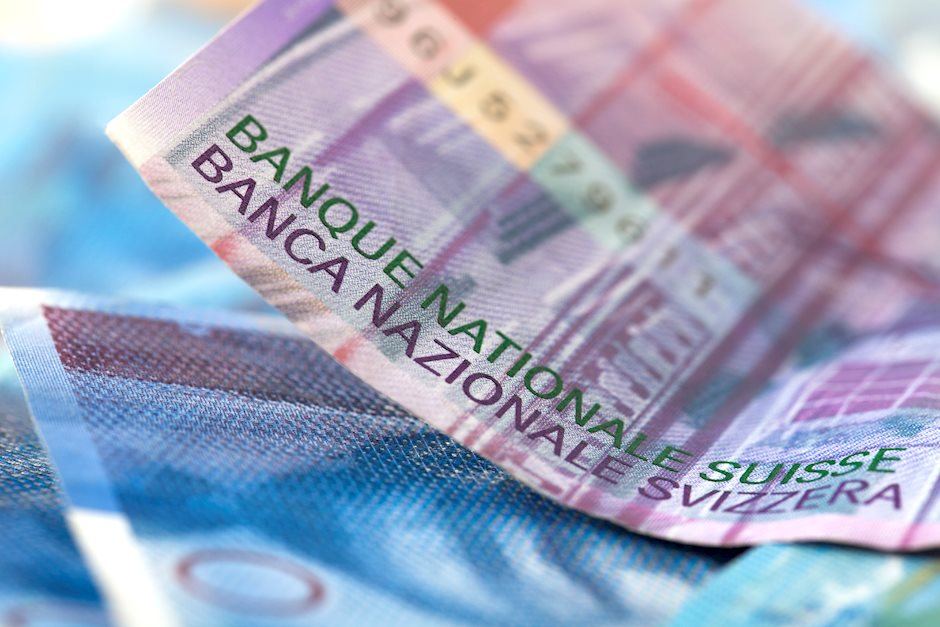USD/CHF appreciates to near 0.8600 due to fading likelihood of a bumper Fed rate cut
- USD/CHF gains ground as traders expect the Fed to slow the pace of interest rate cuts.
- Future markets suggest 89% odds of a 25 basis point cut in November, with no expectation for a 50-basis-point cut.
- Swiss Producer and Import Prices fell by 0.1% MoM and 1.3% YoY in September.

USD/CHF continues to gain ground for the second day, trading around 0.8600 during the early European hours on Monday. The upside of the USD/CHF pair could be attributed to a solid US Dollar (USD), fueled by expectations that the US Federal Reserve (Fed) will slow the pace of borrowing cost reductions more than previously anticipated.
Traders are looking for a 25 basis points (bps) rate cut from the Fed in November, following the release of the Producer Price Index (PPI) data from the United States last Friday. According to the CME FedWatch Tool, the markets are pricing in almost 89% chance of a 25 basis point rate cut in November, with no expectation for a 50-basis-point reduction.
In September, the US Producer Price Index (PPI) remained unchanged at 0%, below August’s 0.2% month-on-month increase. Meanwhile, the monthly core PPI, which excludes food and energy prices, expanded by 0.2% as expected, down from 0.3% the prior month.
In Switzerland, Producer and Import Prices declined by 0.1% month-over-month in September, contrary to the expected increase of 0.1%, following a 0.2% rise in August. On an annual basis, Producer and Import Prices dropped by 1.3%, slightly exceeding the previous decline of 1.2%. This marked the seventeenth consecutive period of decline.
The Swiss Franc (CHF) receives downward pressure from the rising likelihood of more rate cuts by the Swiss National Bank (SNB). "With inflation being reasonably low in Switzerland and with an economy that could grow faster, that tends in the direction of a lower SNB’s policy rate.
Swiss Franc FAQs
The Swiss Franc (CHF) is Switzerland’s official currency. It is among the top ten most traded currencies globally, reaching volumes that well exceed the size of the Swiss economy. Its value is determined by the broad market sentiment, the country’s economic health or action taken by the Swiss National Bank (SNB), among other factors. Between 2011 and 2015, the Swiss Franc was pegged to the Euro (EUR). The peg was abruptly removed, resulting in a more than 20% increase in the Franc’s value, causing a turmoil in markets. Even though the peg isn’t in force anymore, CHF fortunes tend to be highly correlated with the Euro ones due to the high dependency of the Swiss economy on the neighboring Eurozone.
The Swiss Franc (CHF) is considered a safe-haven asset, or a currency that investors tend to buy in times of market stress. This is due to the perceived status of Switzerland in the world: a stable economy, a strong export sector, big central bank reserves or a longstanding political stance towards neutrality in global conflicts make the country’s currency a good choice for investors fleeing from risks. Turbulent times are likely to strengthen CHF value against other currencies that are seen as more risky to invest in.
The Swiss National Bank (SNB) meets four times a year – once every quarter, less than other major central banks – to decide on monetary policy. The bank aims for an annual inflation rate of less than 2%. When inflation is above target or forecasted to be above target in the foreseeable future, the bank will attempt to tame price growth by raising its policy rate. Higher interest rates are generally positive for the Swiss Franc (CHF) as they lead to higher yields, making the country a more attractive place for investors. On the contrary, lower interest rates tend to weaken CHF.
Macroeconomic data releases in Switzerland are key to assessing the state of the economy and can impact the Swiss Franc’s (CHF) valuation. The Swiss economy is broadly stable, but any sudden change in economic growth, inflation, current account or the central bank’s currency reserves have the potential to trigger moves in CHF. Generally, high economic growth, low unemployment and high confidence are good for CHF. Conversely, if economic data points to weakening momentum, CHF is likely to depreciate.
As a small and open economy, Switzerland is heavily dependent on the health of the neighboring Eurozone economies. The broader European Union is Switzerland’s main economic partner and a key political ally, so macroeconomic and monetary policy stability in the Eurozone is essential for Switzerland and, thus, for the Swiss Franc (CHF). With such dependency, some models suggest that the correlation between the fortunes of the Euro (EUR) and the CHF is more than 90%, or close to perfect.
Author

Akhtar Faruqui
FXStreet
Akhtar Faruqui is a Forex Analyst based in New Delhi, India. With a keen eye for market trends and a passion for dissecting complex financial dynamics, he is dedicated to delivering accurate and insightful Forex news and analysis.
















